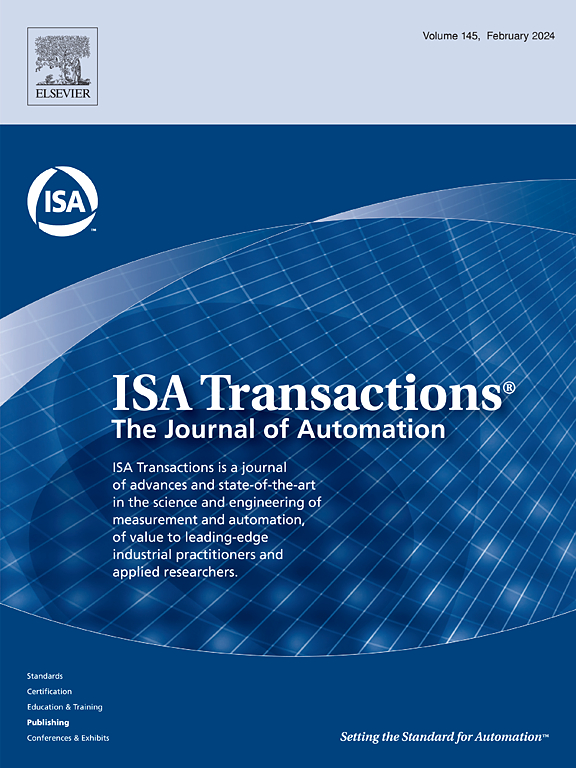伺服谐振抑制中振荡频率校正的分析与设计。
IF 6.5
2区 计算机科学
Q1 AUTOMATION & CONTROL SYSTEMS
引用次数: 0
摘要
机械共振对伺服系统的正常运行造成重大危害。为了减轻机械共振,广泛使用在线自适应陷波滤波器,因此精确确定谐振频率具有重要意义。然而,在涉及高带宽伺服系统的某些情况下,一种称为频移的现象会使陷波滤波器在处理伺服共振时无效。为了解决这一问题,提出了一种基于双功率近似律的改进滑模观测器的振动频率校正方案。首先,分析了系统时延周围的振荡频移,并利用Pade近似方法对系统时延进行等效建模。随后,设计了一个具有两个自适应反馈系数的反馈回路来自动调整时间因子。值得注意的是,该方案可以动态校正振荡频率,从而促进谐振抑制。同时,ismos识别的力学参数为反馈系数调整提供了重要的基础。值得注意的是,双功率近似律在保持参数辨识精度的同时,有效地抑制了高频颤振。最后,通过仿真和实验结果验证了该方案的有效性。本文章由计算机程序翻译,如有差异,请以英文原文为准。
Analysis and design of oscillation frequency correction for servo resonance suppression
Mechanical resonance poses significant hazards to the normal operation of the servo systems. To mitigate mechanical resonance, online adaptive notch filter is extensive used, thus the precise determination of resonant frequency holds significant importance. However, in certain scenarios involving the high-bandwidth servo system, a phenomenon known as frequency shift can make the notch filter ineffective in addressing servo resonance. To solve this problem, an oscillation frequency correction scheme based on two improved sliding-mode observers (ISMOs) utilizing a dual-power approximation law is proposed. First, the oscillation frequency shift is analyzed around the system delay, which can be equivalently modeled using a Pade approximation method. Subsequently, a feedback loop featuring two adaptive feedback coefficients is designed to automatically tune the time factor. Remarkably, the scheme can dynamically correct oscillation frequency, thereby promoting resonance suppression. At the same time, ISMOs-identified mechanical parameters provide critical foundations for feedback coefficient adjustment. It is worth noting that the dual-power approximation law effectively suppresses high-frequency chatter while maintaining parameter identification accuracy. Finally, the effectiveness of the scheme is validated through simulation and experimental results.
求助全文
通过发布文献求助,成功后即可免费获取论文全文。
去求助
来源期刊

ISA transactions
工程技术-工程:综合
CiteScore
11.70
自引率
12.30%
发文量
824
审稿时长
4.4 months
期刊介绍:
ISA Transactions serves as a platform for showcasing advancements in measurement and automation, catering to both industrial practitioners and applied researchers. It covers a wide array of topics within measurement, including sensors, signal processing, data analysis, and fault detection, supported by techniques such as artificial intelligence and communication systems. Automation topics encompass control strategies, modelling, system reliability, and maintenance, alongside optimization and human-machine interaction. The journal targets research and development professionals in control systems, process instrumentation, and automation from academia and industry.
 求助内容:
求助内容: 应助结果提醒方式:
应助结果提醒方式:


